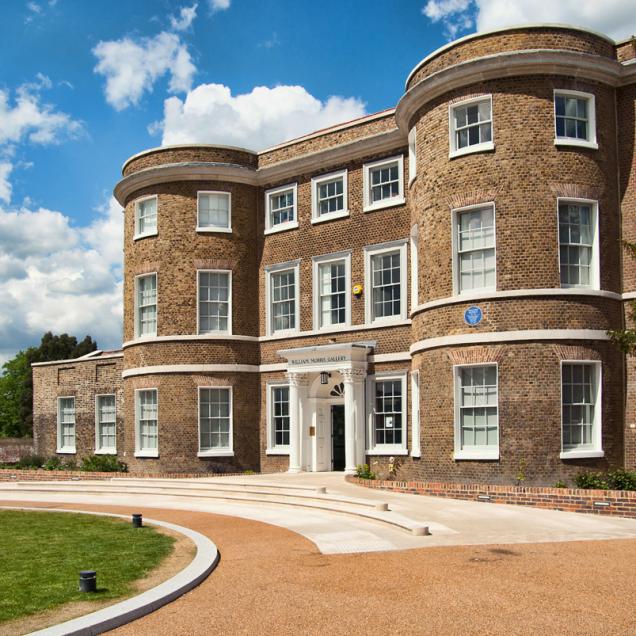

Exhibition design is getting plenty of press these days with a raft of high-profile shows taking the sector by storm. Pamela Buxton takes an indepth look at three practices that have made the field into a speciality.
Since exhibition design calls for such a variety skills, it's not so surprising that those who thrive in it have such diverse backgrounds. Whereas the long-established practice Casson Mann came to the discipline from interior design, comparative newcomer GuM grew out of architecture practice Pringle Richards Sharratt while Real Studios, designer of the V&A blockbuster David Bowie Is, came to exhibition design from the unlikely paths of mechanical engineering and physiotherapy. But whatever their backgrounds, they all face the same issues given that the golden years of the lottery-funding boom years are over. There are more diverse audiences than ever to engage and myriad media to deploy with ever-shrinking budgets. Challenging conditions certainly - but it's still possible to pull it off with aplomb.
GuM
GuM (short for Galleries und Museums) is off to a flying start as a specialist in gallery and museum design with projects celebrating such creative luminaries as William Morris and Benjamin Britten. Not that London-based GuM is really a complete newcomer. While the exhibition specialism might be newly defined, GuM springs from seasoned architecture practice Pringle Richards Sharratt, whose work includes the Sheffield Millennium Galleries, the Pitt Rivers refurbishment and the V&A's Märit Rausing Gallery of Contemporary Glass. So often, says GuM director Penny Richards, new museums end up housing exhibitions that do not work as well with the architecture as they should. Often they seemed to have been developed in a bubble of their own, even though the building itself often should be seen as the largest exhibit in the museum's collection.
'We decided to set up GuM to create a design studio which has a special interest in showing the display of exhibits and artefacts in complete harmony with the building - to present a gallery or museum and its contents in a more integrated and sensitive style," she says. 'We sensed that clients wanted their exhibition designers to have their own identity and ideas and to have a degree of independence from the architect. GuM has given us an opportunity to concentrate on developing our approach to a collection, and how to show and interpret objects in an important architectural context.'
GuM was appointed to work alongside PRS at the William Morris Museum in Walthamstow, East London and with Stanton Williams on the Britten exhibition in Aldeburgh, Suffolk. Richards and fellow PRS director John Pringle are sure that architects, armed with their spatial know-how, have the right background for exhibition design and are wellplaced to ensure that it is sympathetic with the host building. That said, they do bring in expertise when needed, collaborating with specialists such as Thomas Manss, the graphic designer for both Morris and Britten shows, and Benedetta Tiana of BT Museum Consultancy, with whom they collaborated on the Morris project.
GuM finds the nature of the work hugely rewarding, delving into the archives and working with curators to decide how best to display the objects to effectively communicate the subject. 'It's very invigorating,' says Richards. 'We like the idea that an artefact or a collection of artefacts sets the brief for a project - and we like the variety of objects that we encounter on our projects and learning about them and their stories and significance. We like working with the curators to deciding which objects should lead a particular strand of the interpretation. We enjoy developing the parallel references between the historic and contemporary, and both the constraints and the freedom that come with designing for galleries and museums.'
With his rich life and varied achievements from poetry to design, political activism to publishing, William Morris was a great subject for exhibition design. GuM was particularly keen to convey his modernity, says Richards.
As well as scene-setting sections on his inspirations and domestic life, the exhibition includes a recreation of one of his furnishings shops - then a progressive venture for a designer - and a workshop room which shows the techniques behind the designs, from stained-glass windows to block-printed fabrics and wallpapers.
Laid out with a long central workbench inset with displays and interactives, the room is crowned with a piece of printed fabric hung high to allow the pattern to dry - as would have been the case in Morris's day.
Not all aspects of Morris's life are so visually alluring, and this is the where the skill of the exhibition designer comes to the fore. For the room on his book publishing for example, GuM introduced a bold black and white striped floor to both graphically get visitors' attention and allude to the ink and page of printing. It would have been easy to get carried away with pattern but GuM uses it sparingly - as solar shading fritting on the cafe roof, on the doors to the lavatories, and in two bespoke items - a linoleum floor with a red marigold motif, and a new stair carpet.
The Britten 100 exhibition, which opens in June at the composer's Red House home in Aldeburgh, will include sections on how Britten composed, his influences, life in Aldeburgh, and a Peter Grimes section set within a dark space like an upturned boat.
In all its work GuM's mission, says Pringle, seeks to avoid dumbing down the subject matter yet still cater for those with little previous knowledge: 'Your challenge as a designer is trying to make something appeal on different levels through how you present it, as well as the choice of objects.' And with several more projects in the offing, including the Black Cultural Archives in Brixton, GuM has plenty more opportunities to put into practice its belief in an integrated exhibition design that embraces, rather than ignores, the architecture of the building.
© Progressive Media International 2013